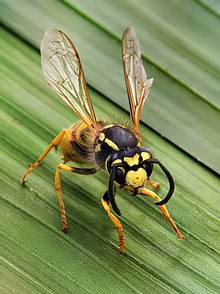Watch Video on this Topic👉 Click Here
What is Doping ?
Semiconductor Basics
Insulators
Q1.Green House
Effect' means
1) Pollution
in houses in tropical region
2) Prevention of ultra-violet radiation by the ozone layer
3) Trapping of solar energy due to atmospheric gases
4) Damage to green painted buildings
2) Prevention of ultra-violet radiation by the ozone layer
3) Trapping of solar energy due to atmospheric gases
4) Damage to green painted buildings
Explanation -
The greenhouse
effect is the process by which radiation from a planet's atmosphere
warms the planet's surface to a temperature above what it would be without its
atmosphere.
Earth’s natural greenhouse
effect is critical to supporting life. Human activities, mainly the burning of
fossil fuels and clearing of forests, have strengthened the greenhouse effect
and caused global warming.
By their percentage contribution to the greenhouse effect on
Earth the four major gases are
·
water vapor, 36–70%
·
carbon dioxide, 9–26%
·
methane, 4–9%
·
ozone, 3–7%
Protocols on global warming
The Kyoto Protocol
The Kyoto Protocol was
adopted in Kyoto, Japan on 11 December 1997 and entered into force on 16 February 2005.
There are currently 192 parties (Canada withdrew effective December 2012) to the Protocol.
The Kyoto Protocol is an international treaty which extends
the 1992 United Nations Framework Convention on Climate Change.
The Kyoto Protocol applies
to the six greenhouse gases -
1.Carbon dioxide (CO2),
2.Methane
(CH4),
3.Nitrous oxide (N2O),
4.Hydrofluorocarbons (HFCs)
5.Perfluorocarbons (PFCs)
6.Sulphur hexafluoride (SF6).
Q.2 Addition
of suitable impurities into semiconductor, is called
1) Doping
2) Mixing
3) Forming
4) Diluting
1) Doping
2) Mixing
3) Forming
4) Diluting
Explanation –
What is Doping ?
Intentionally introducing
impurities into an extremely pure semiconductor to change its electrical
properties.
Conductors - a conductor is an object
or type of material that allows the flow of an electrical current in one or
more directions. Materials made of metal are common electricalconductors.
very low values of resistivity, This low value allows them to
easily pass an electrical.
Good examples conductors are generally metals such as Silver ,Copper,
Aluminium etc.
Is Carbon conduct
electricity because it is Non-Metal?
Ans- Carbon by its own does not conduct electricity, but its allotrope
graphite conducts electricity .
This is because graphite has a “free” electron in its outer shell that allows
it to conductsome electricity.
Semiconductor Basics
They have electrical
properties somewhere in the middle, between those of a “conductor” and an
“insulator”.
They are not good
conductors nor good insulators (hence their name “semi”-conductors). They
have very few “free electrons” because their atoms are closely grouped together
in a crystalline pattern called a “crystal lattice” but electrons are still
able to flow, but only under special conditions.
Examples - silicon (Si),
germanium (Ge) and gallium arsenide (GaAs).
Silicon and Germanium are
classed as intrinsic semiconductors, that is they are chemically pure, as
the doped silicon is no longer pure.
Note- Silicon is most commonly used
semiconductor, it has four valence electrons in its outermost shell.
Insulators
They are the exact
opposite of conductors.
3.Kyoto
Protocol is associated with
1) Species conservation
2) Climate change
3) Wetland Conservation
4) Medicinal plants
1) Species conservation
2) Climate change
3) Wetland Conservation
4) Medicinal plants
4.Meibomian
glands are located in
1) Eye
2) Ear
3) Nose
4) Skin
Explanation –
1) Eye
2) Ear
3) Nose
4) Skin
Explanation –
The Meibomian
glands (often written with a small m, and also called tarsal
glands) are a holocrine type of exocrine glands, at the rim of the eyelids inside the tarsal plate, responsible for the supply of meibum, an oily substance
that prevents evaporation of the eye's tear film. Meibum prevents tear spillage onto the cheek,
trapping tears between the oiled edge and the eyeball, and makes the closed
lids airtight.
Brunner's
glands (or duodenal glands).
The main function of these glands is to produce a mucus-rich
alkaline secretion (containing bicarbonate) in order to:
·
protect the duodenum from the acidic content of chyme (which
is introduced into the duodenum from the stomach)
·
provide an alkaline condition for the intestinal enzymes to be
active, thus enabling absorption to take place
·
lubricate the intestinal walls
Sebaceous glands
Sebaceous
glands are microscopic exocrine glands in the skin that secrete an oily or waxy matter, called sebum.
In humans, they occur in the greatest number on the face and scalp, but also on all parts of the skin except the palms of the hands and soles of the feet.
Sebum, secreted by the
sebaceous gland in humans, is primarily composed of triglycerides (≈41%), wax esters (≈26%), squalene (≈12%), and free fatty acids (≈16%).
5.Arsenic
problem in India is primarily due to
1) Overexploitation of coal in Bihar and Bengal
2) Overexploitation of arsenopyrite in the hinterland
3) Overexploitation of ground water in the affected areas
4) Overexploitation of surface water in the affected areas
1) Overexploitation of coal in Bihar and Bengal
2) Overexploitation of arsenopyrite in the hinterland
3) Overexploitation of ground water in the affected areas
4) Overexploitation of surface water in the affected areas
Arsenic contamination in groundwater in the Ganga-
Brahmaputra fluvial plains in India and Padma-Meghna fluvial plains in
Bangladesh and its consequences to the human health have been reported as one
of the world’s biggest natural groundwater calamities to the mankind. In India,
seven states namely- West Bengal, Jharkhand, Bihar, Uttar Pradesh in the flood
plain of the Ganga River; Assam and Manipur in the flood plain of the
Brahamaputra and Imphal rivers and Rajnandgaon village in Chhattisgarh state
have so far been reported affected by Arsenic contamination in groundwater
above the permissible limit of 10 µg/L.
6.Which
of the following vitamins are water soluble?
1) Vit. A & Vit. B
2) Vit. B & Vit. C
3) Vit. C & Vit. D
4) Vit. A & Vit. K
1) Vit. A & Vit. B
2) Vit. B & Vit. C
3) Vit. C & Vit. D
4) Vit. A & Vit. K
The two different types of vitamins are fat-soluble vitamins
and water-soluble vitamins. Fat-soluble vitamins — vitamins A, D, E and K —
dissolve in fat before they are absorbed in the bloodstream to carry out their
functions. Excesses of these vitamins are stored in the liver, and are not
needed every day in the diet
7.Besides
CO2, the other green house gas is
Options:
1) CH4
2) N2
3) Ar
4) O2
1) CH4
2) N2
3) Ar
4) O2




